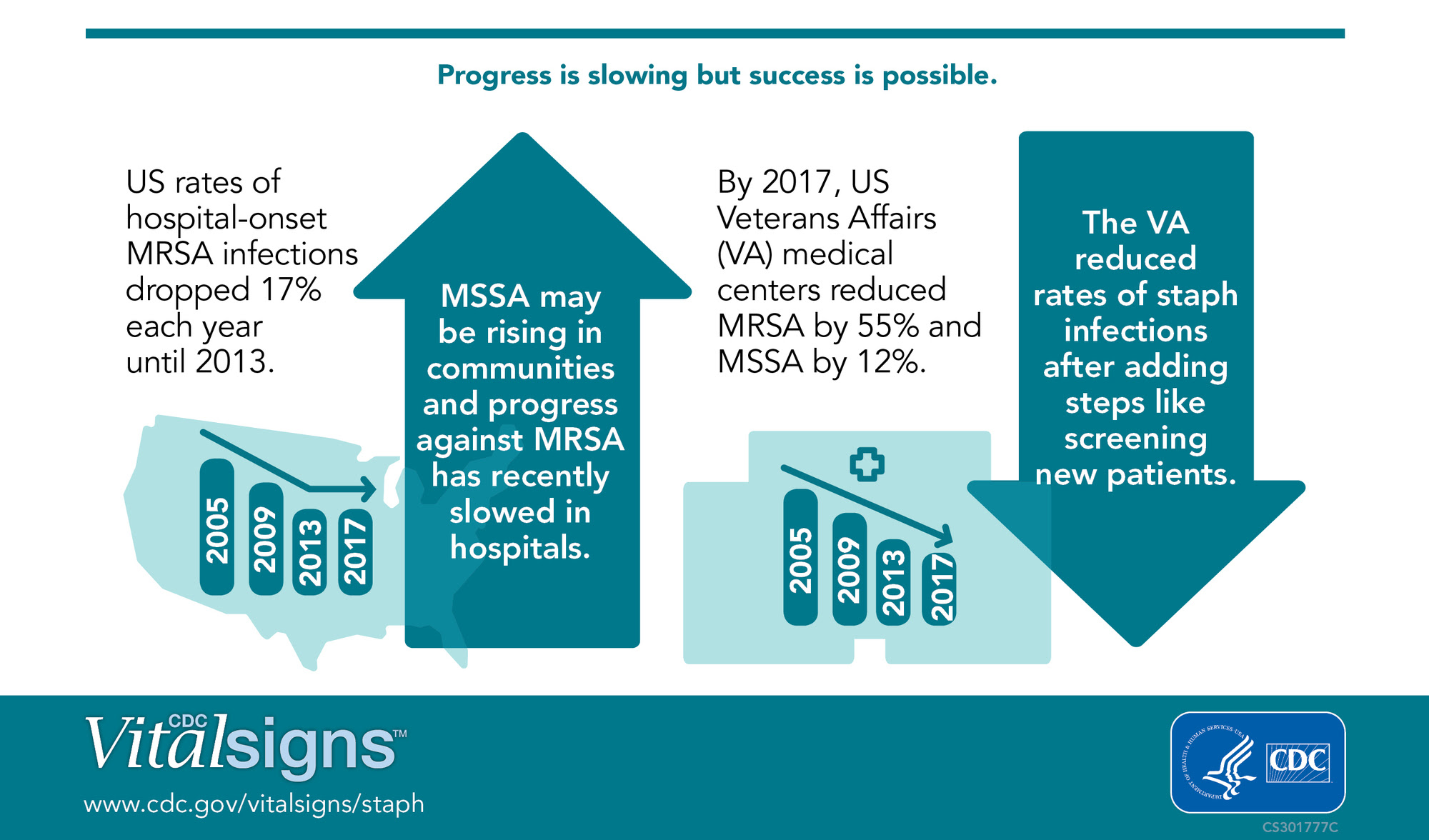Deadly Staph Infections Still Threaten the U.S.
New report shows significant national progress is slowing, causing concern
CDC's Vital Signs reports today that more than 119,000 people suffered from bloodstream Staphylococcus aureus (staph) infections in the United States in 2017—and nearly 20,000 died. The report underscores that both types of S. aureus(methicillin-resistant or MRSA, and methicillin-susceptible or MSSA) can be deadly.
Staph is a type of germ often found on human skin and on surfaces and objects that touch the skin. While the germ does not always harm people, it can get into the bloodstream and cause serious infections, which can lead to sepsis or death.
Today's findings show that hospital infection control efforts successfully reduced rates of serious staph infections in the U.S. (about 17% each year 2005-2012). Recent data, however, show that this success is slowing and the rise in staph infections in the community may be linked to the opioid crisis.

The risk for serious staph infection is greatest when people:
- Stay in healthcare facilities or have surgery.
- Have medical devices placed in their body.
- Inject drugs such as opioids.
- Come into close contact with someone who has staph.
Many hospitals, including Veterans Affairs (VA) Medical Centers, have successfully prevented staph infections and spread. The VA reduced staph infections by implementing a multifaceted prevention program that included MRSA screening, use of Contact Precautions (gloves and gowns), and an increased emphasis on hand hygiene.
Healthcare providers and administrators can protect patients:
- Make staph prevention a priority.
- Follow CDC recommendations, including Contact Precautions, to prevent spread of staph.
- Consider additional interventions, like screening or decolonizing high-risk patients, if not meeting infection reduction goals.
- Treat infections appropriately and rapidly if they do occur.
- Educate patients about ways to avoid infection and spread, and about early signs of sepsis.
Not a healthcare provider? You can protect yourself and your family from staph infections, too: Keep your hands clean, cover wounds, avoid sharing items that contact skin (e.g., towels, razors), and watch for signs of infections (e.g., red, warm, painful skin).
Learn more:
- CDC continues to recommend Contact Precautions for patients carrying or infected with resistant staph.
- New healthcare resource: Strategies to Prevent Hospital-onset Staphylococcus aureus Bloodstream Infections in Acute Care Facilities.
- New data on USA100 and USA300 strains: Trends in incidence of methicillin-resistant Staphylococcus aureusbloodstream infections differ by strain type and healthcare exposure, United States, 2005–2013.
- What is sepsis? Learn more about sepsis, the body’s extreme response to an infection.
- Have more questions? Tune in to CDC’s Facebook page for a Facebook Live on March 26 with experts talking about how to protect yourself and your family from staph.
|





















.jpg)









No hay comentarios:
Publicar un comentario